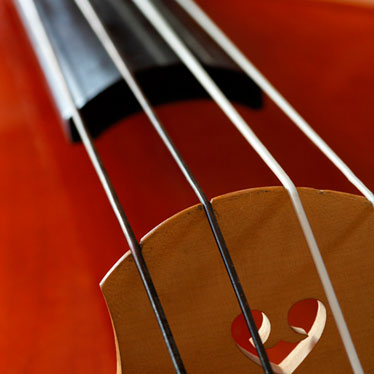Which String Instrument Should I Play?

Students who are interested in learning to play a string instrument have plenty of options. In addition to the well-known orchestra strings, there are also guitar, banjo, dulcimer, and other less known but highly distinctive instruments to include in your choice. And although it’s not always easy to narrow down the aspects, you can simplify the process by considering the advantages and requirements of each, and then making your decision based on the selection that will work best for you.
This list will help students compare string instrument differences by examining the various pros and cons of each, according to the musician’s specific characteristics and ultimate goals.
Narrow the Field
Firstly, you’ll need to decide whether you’d like to play a string instrument that includes a bow. Guitars, mandolins, and banjos employ a plucking/strumming motion to create sounds, but orchestral instruments like violins, violas, cellos and double bass utilize a bow to create the vibrations. Bowed instruments are a bit trickier to learn, but deliver an expansive range of applications.
The following considerations will mainly pertain to stringed instruments that use a bow, but since they concentrate on performance specifics, you can still use them to refine your choice of instrument.
Find Your Sound
Instruments are a very personal extension of the musician. One of the best ways to determine which string instrument to play is to listen to various tracks of music played solely by that instrument. Go online to find solo performance videos of each specific string instrument. It helps if you choose a few different genres for each sample. For instance, listen to jazz, classical, rock, and bluegrass performances to hear the full potential of each instrument.
If you simply pick an instrument at random, the risk of becoming disinterested quickly is high. However, if you choose to learn a particular instrument based on the fact that the sound created actually speaks to you—it moves and elevates your spirit—then you’ll be more likely to stick with it and develop real proficiency. Listening to the range, complexity, and abilities of each instrument is often very enlightening. Indeed, you may be surprised by which one you prefer.
Physical Considerations and Overview of the Basics
Depending on your age and physical size, some string instruments are more responsive for certain players than others. Knowing the basics about each one can help guide your selection.
- Violin—this instrument is very versatile and is available according to your specific size. Violins produce lovely, vibrant sounds and have remarkable bowing dexterity. They have the advantage of being highly recognizable, and sound great by themselves or within an orchestra, group, or quartet. Technically a string quartet features two violins, a viola, and a cello, so while this instrument is popular, it’s also very adaptable and in demand in a variety of musical genres. However, if as an older student you suffer from tendonitis, joint/back pain, or arthritic complaints, the form and methods required to play the violin may make it too strenuous for you. Also, if high pitches aren’t your favorite, choose a string instrument that doesn’t involve the treble clef.
- Viola—the viola is great choice if you want to eventually earn income as a musician. Violists, like bassists, are usually in high demand, and the instrument itself combines the presence and timber of a cello with the rich, distinctive clarity of a violin, although it does have less range. The viola is slightly larger than a violin, so it’s a great choice for students who want the transporting convenience of a smaller instrument, but who have difficulty contorting their large hands on the violin’s smaller fingerboard.
- Cello—this string instrument creates rich, pleasing tones and has quite a following of its own. Cellists and fans of this striking instrument swear that nothing else sounds as close to the human voice, or produces a lovelier sound. An octave lower than the viola, its expressive range is truly incredible. It can carry the bass or melody, and the cello is a great choice for students who want to play their instrument while either standing or sitting. However, the initial learning can be difficult if you have short fingers.
- Double Bass—again, professional bass players are usually in high demand. If you’d eventually like to have a performing career and enjoy orchestrating the tempo, the bass meets both of those requirements. It’s a little more cumbersome to transport, but the double bass has very few musical genre boundaries.
Other Suggestions
- Carefully asses the price of a quality instrument. Buying a cheap one isn’t worth it.
- Speak with your instructor, local string instrument dealer, or other musicians about the pros and cons of playing. First-hand knowledge is always beneficial.
With a little careful deliberation, you can choose an instrument that will offer you a lifetime of playing enjoyment.


